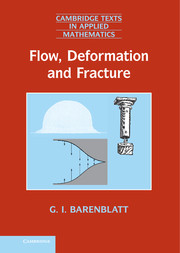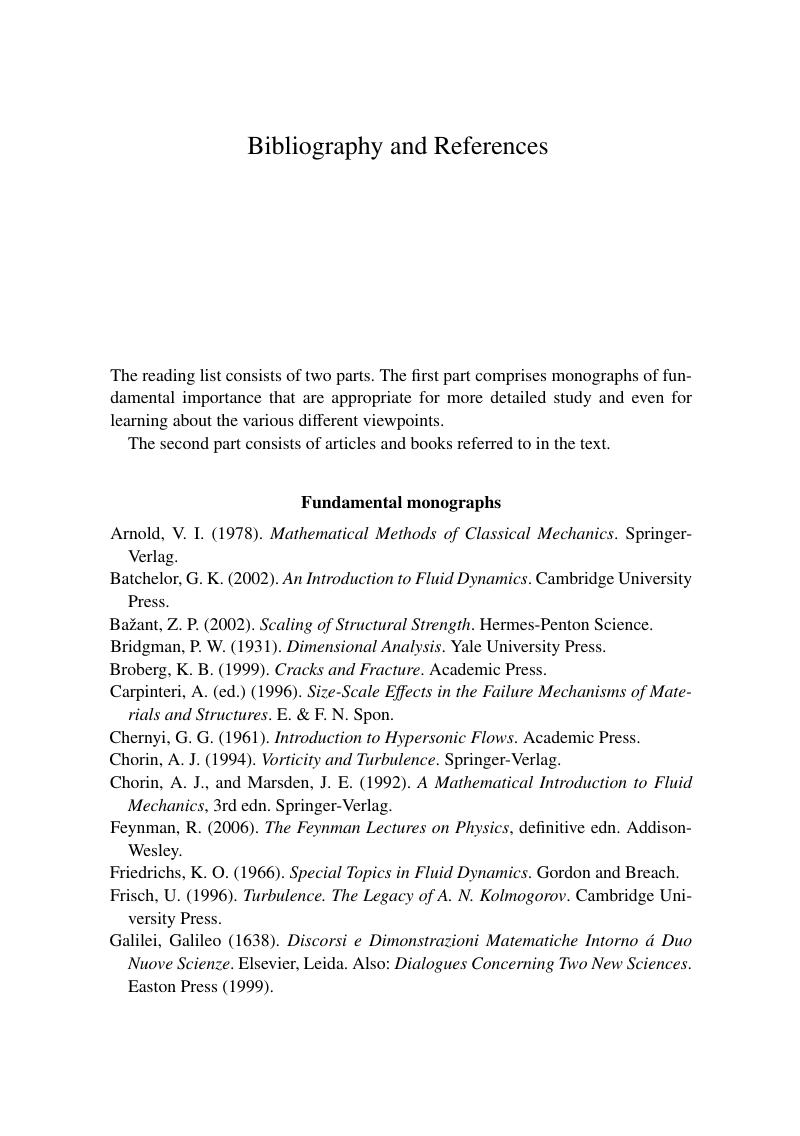 Flow, Deformation and Fracture
Flow, Deformation and Fracture Book contents
- Frontmatter
- Dedication
- Contents
- Foreword
- Preface
- Introduction
- 1 Idealized continuous media: the basic concepts
- 2 Dimensional analysis and physical similitude
- 3 The ideal incompressible fluid approximation: general concepts and relations
- 4 The ideal incompressible fluid approximation: analysis and applications
- 5 The linear elastic solid approximation. Basic equations and boundary value problems in the linear theory of elasticity
- 6 The linear elastic solid approximation. Applications: brittle and quasi-brittle fracture; strength of structures
- 7 The Newtonian viscous fluid approximation. General comments and basic relations
- 8 The Newtonian viscous fluid approximation. Applications: the boundary layer
- 9 Advanced similarity methods: complete and incomplete similarity
- 10 The ideal gas approximation. Sound waves; shock waves
- 11 Turbulence: generalities; scaling laws for shear flows
- 12 Turbulence: mathematical models of turbulent shear flows and of the local structure of turbulent flows at very large Reynolds numbers
- References
- Index
- References
References
Published online by Cambridge University Press: 05 June 2014
- Frontmatter
- Dedication
- Contents
- Foreword
- Preface
- Introduction
- 1 Idealized continuous media: the basic concepts
- 2 Dimensional analysis and physical similitude
- 3 The ideal incompressible fluid approximation: general concepts and relations
- 4 The ideal incompressible fluid approximation: analysis and applications
- 5 The linear elastic solid approximation. Basic equations and boundary value problems in the linear theory of elasticity
- 6 The linear elastic solid approximation. Applications: brittle and quasi-brittle fracture; strength of structures
- 7 The Newtonian viscous fluid approximation. General comments and basic relations
- 8 The Newtonian viscous fluid approximation. Applications: the boundary layer
- 9 Advanced similarity methods: complete and incomplete similarity
- 10 The ideal gas approximation. Sound waves; shock waves
- 11 Turbulence: generalities; scaling laws for shear flows
- 12 Turbulence: mathematical models of turbulent shear flows and of the local structure of turbulent flows at very large Reynolds numbers
- References
- Index
- References
Summary

- Type
- Chapter
- Information
- Flow, Deformation and FractureLectures on Fluid Mechanics and the Mechanics of Deformable Solids for Mathematicians and Physicists, pp. 243 - 252Publisher: Cambridge University PressPrint publication year: 2014


